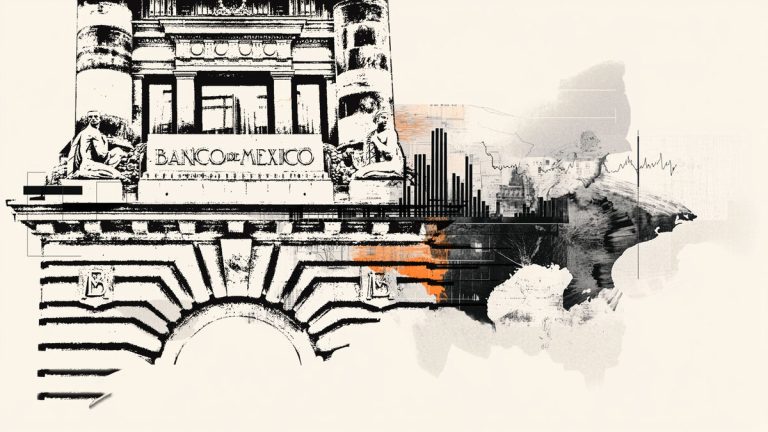Key Takeaways
- Banco de Mexico (Banxico) reduced its benchmark interest rate by 25 basis points to 7.25%.
- The decision was made with a 4-1 vote, indicating some dissent within the monetary policy board.
- The bank’s statement suggests a potentially slower pace of future rate cuts due to inflation concerns.
- Inflation is projected to reach Banxico’s 3% target by the third quarter of 2026.
- The USD/MXN currency pair experienced a slight dip following the announcement.
Banxico Implements Rate Cut Amidst Inflationary Concerns
Banco de Mexico (Banxico) has executed a 25 basis point reduction in its key interest rate, bringing it down to 7.25%. This monetary policy decision was reached through a 4-1 vote by the Governing Board. Notably, Deputy Governor Jonathan Heath was the dissenting voice, advocating to maintain the rate at its previous level of 7.50%.
In its official monetary policy statement, the Governing Board indicated that the decision to continue the interest rate-cutting cycle was based on an assessment of the current inflation outlook. This move signals an ongoing attempt to stimulate the economy, balanced against the persistent challenge of inflation.
Assessing the Future Path of Monetary Policy
The language used in Banxico’s statement regarding future rate adjustments has evolved. Previously, the Board indicated it would assess further adjustments to the reference rate. However, the updated statement now states, the Board will evaluate reducing the reference rate. This subtle shift suggests a more cautious approach to subsequent policy easing, potentially hinting at a pause in the rate-cutting cycle if inflation remains a concern.
💡 This change in wording implies that policymakers are becoming more vigilant about persistent inflationary pressures and may not commit to a rapid succession of rate cuts.
Banxico has also provided updated economic projections. These forecasts anticipate headline inflation will converge towards the central bank’s target of 3% by the third quarter of 2026. This timeline indicates a medium-term view on achieving price stability.
Market Reaction and Potential USD/MXN Movements
Following the announcement, the USD/MXN currency pair saw a modest decline, moving from approximately 18.59 down to 18.57. However, it has not yet tested the intraday low of 18.55.
📍 A break below the 18.55 level could bring the confluence of the 20 and 50-day Simple Moving Averages (SMAs) into focus, situated around the 18.46-18.48 range. Further downward pressure might lead to a test of the year’s low at 18.19, with the significant psychological level of 18.00 lying beyond that.
Conversely, if the USD/MXN pair manages to climb above the 18.60 mark, the next level of resistance to watch would be the high recorded on September 2nd at 18.86. Surpassing this point could pave the way for a challenge of the 19.00 figure.
Frequently Asked Questions about Banxico
What is the Bank of Mexico?
The Bank of Mexico, commonly known as Banxico, serves as Mexico’s central bank. Its primary mandate involves preserving the value of the Mexican Peso (MXN) and formulating monetary policy. The overarching objective is to maintain inflation at low and stable levels, targeting 3%—the midpoint of a 2% to 4% tolerance band.
How does the Bank of Mexico’s monetary policy influence the Mexican Peso?
Banxico primarily influences monetary policy by setting interest rates. When inflation exceeds the target, the bank raises rates to make borrowing more expensive, thereby cooling the economy. Higher interest rates typically benefit the Mexican Peso (MXN) by offering more attractive yields to investors. Conversely, lower rates tend to weaken the MXN. The interest rate differential with the US dollar and the divergence in expected policy between Banxico and the US Federal Reserve are key determinants.
How often does the Bank of Mexico meet during the year?
Banxico convenes its monetary policy meetings eight times annually. The bank’s decisions are often influenced by the US Federal Reserve (Fed), and its committee generally meets about a week after the Fed. This allows Banxico to react to or anticipate the Fed’s monetary policy actions. For instance, post-Covid-19 pandemic, Banxico raised rates before the Fed did, aiming to mitigate potential depreciation of the Mexican Peso (MXN) and prevent capital outflows that could destabilize the economy.
Expert Summary
Banco de Mexico’s recent decision to cut interest rates by 25 basis points to 7.25% signifies a continued but potentially moderated easing cycle. While the move aligns with stimulating the economy, the subtle shift in forward guidance suggests a cautious stance due to ongoing inflation concerns.
📊 The updated inflation projections indicate a medium-term target for price stability, and market participants will be closely observing upcoming data and Banxico’s communications for further clues on the pace of future policy adjustments.

